Photography of geysers and hot springs
What is the difference between a geyser and an engineered fountain? Well, besides the obvious fact that one is all natural and the other one is a product of human art of building, it is the evoked emotion.
As for an engineered fountain, everything is intended and designed in advance. What a spectator sees has been predetermined by humans, there is no room for surprises or secrets beyond knowledge. Thus, there is no room for magic, but at best, for appreciation. By contrast, the eruption of a geyser is pure magic, all the more if it comes as a rare, fortuitous event. And magic always makes good photo opportunities.
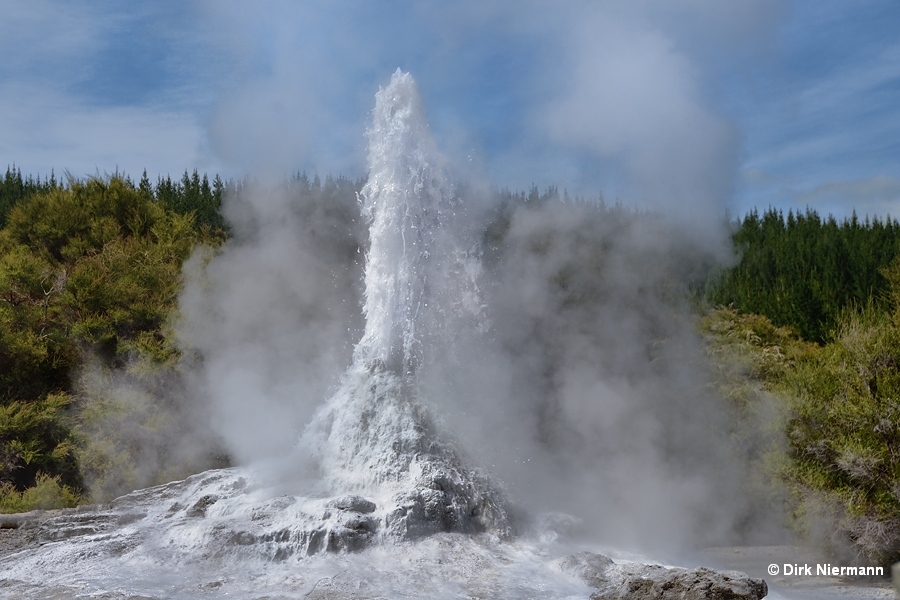
There are some special influencing factors which distinguish the photography of geysers and other hydrothermal features from ordinary landscape photography. Worth mentioning are clouding by steam, unpredictability of eruptions, reflections on the water surface, and above all the restricted accessibility due to safety reasons. A mandatory trail or boardwalk limits perspective and angle of view considerably. Remedial measures are narrowed to a decent selection of lenses covering a broad range of focal width, a telescope stick or a camera drone. However, drones a largely banned in geothermal areas for good reasons. As far as telescopic sticks are concerned, the short and fragile selfie sticks for mobile phones are not very helpful. I use a detachable leg of my carbon tripod, which allows a decent reach, secure locking of the remote-controlled camera and very stable and safe handling. It goes without saying that the mounting must never be held straight above a thermal feature but should only be used above solid ground to enhance the perspective.
In contrast to many other situations in landscape photography, direct sunlight about noon supplies the best conditions for taking photos of clearwater hot springs. This supports the bright colors of pure water, mats of thermophilic bacteria, and sinter rims best. On the downside, you may have to handle harsh light-dark contrasts, a challenge met by the high dynamic range of modern digital cameras. If you have ever wondered, why colors of thermophiles sometimes are coming out brilliant and shiny, but at other times rather dull, then the answer is, activation by sunlight. In fact, it needs several days if not weeks of sunny weather for most bacteria to develop their brightest colors.
Light of the early morning or late afternoon, usually very appreciated to enhance atmosphere, is not the best choice for catching the unique characteristic of a hot spring. By fading blue and green colors and enhancing red, orange, and brown it distorts the color pattern of the motif. Sunrise or sunset even may extinguish inherent colors completely. On top of that, the chance of annoying reflections on water surfaces is rising considerably with a low altitude of the sun.
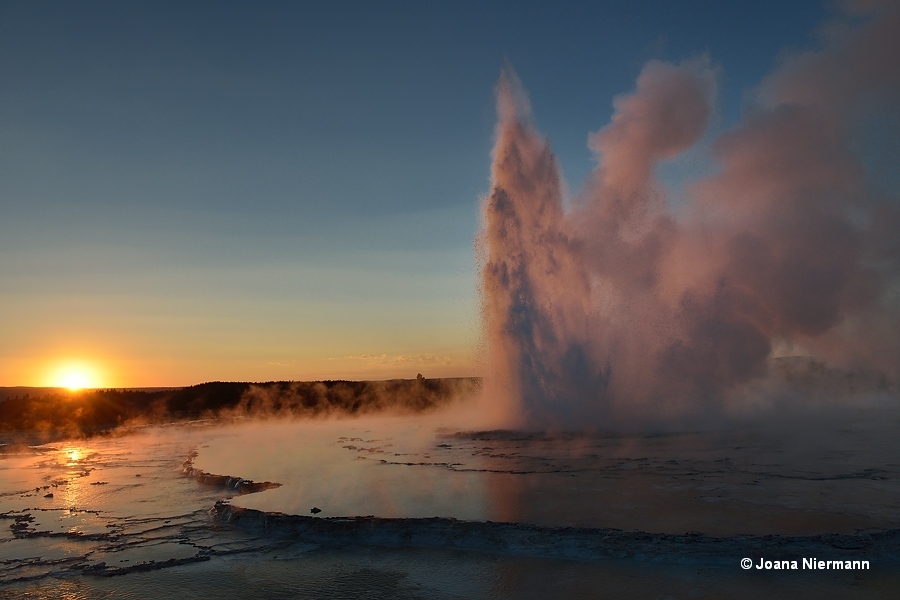
The appearance of muddy hot springs, mud pots, mineral deposits, and soil around springs or fumaroles on the other hand benefits from a clouded sky's diffuse light. Additionally, the colors of soil and rocks are also significantly enhanced by humidity.
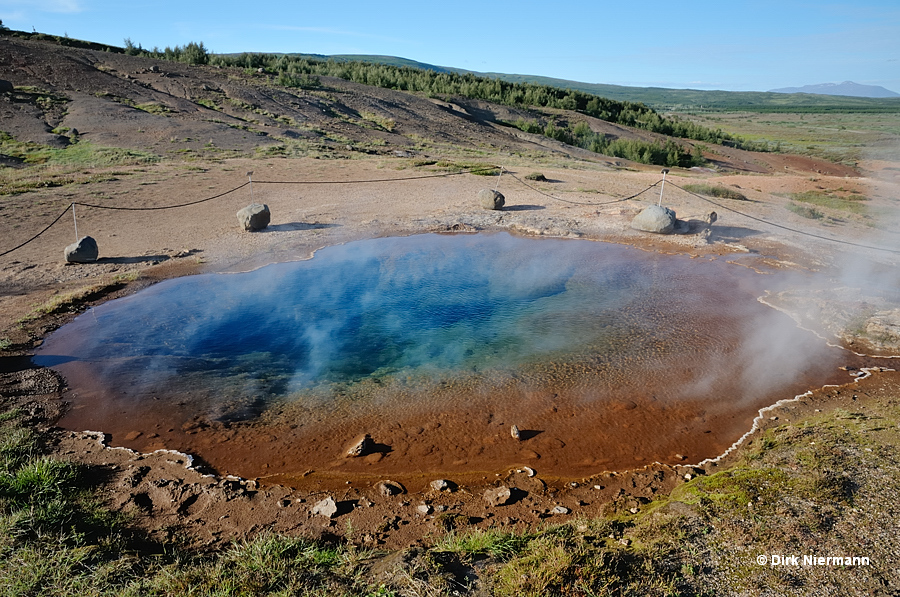
Steam may also be a limiting factor for photographic success. The amount of steam does not only depend on ambient conditions such as temperature, humidity, and wind, but also on the current temperature of the hydrothermal feature. Springs, spring clusters, and whole thermal areas are heating up and cooling down on individual cycles. So you may find on the same location excellent low steam conditions at one time and days or weeks later massive interferences though light and ambient conditions are nearly the same. The good news is that spouting springs usually become more active with rising water temperatures.
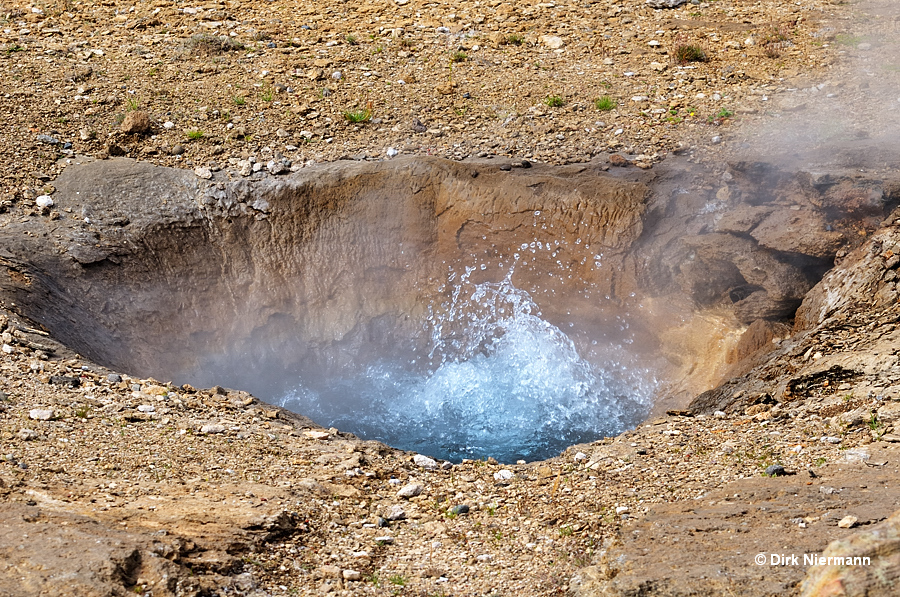
Reflections often hinder the view through the water surface of a spring and diminish the colors. They can be suppressed by using a polarising filter in front of the camera lens.
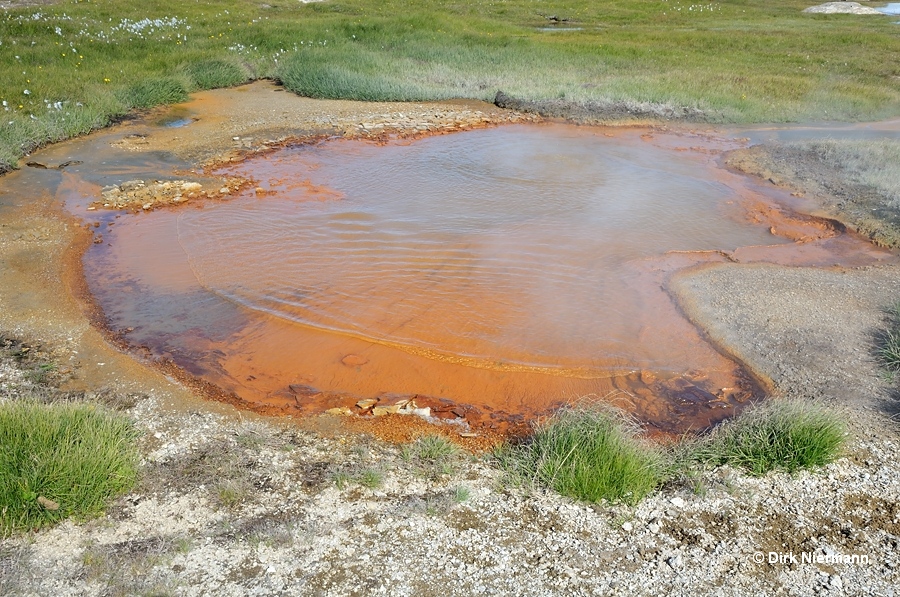
Finishing touches are made with the help of photo editing software, which allows to emphasize the essential elements. I always take pictures in RAW format to maintain the maximal degrees of freedom in processing the image.
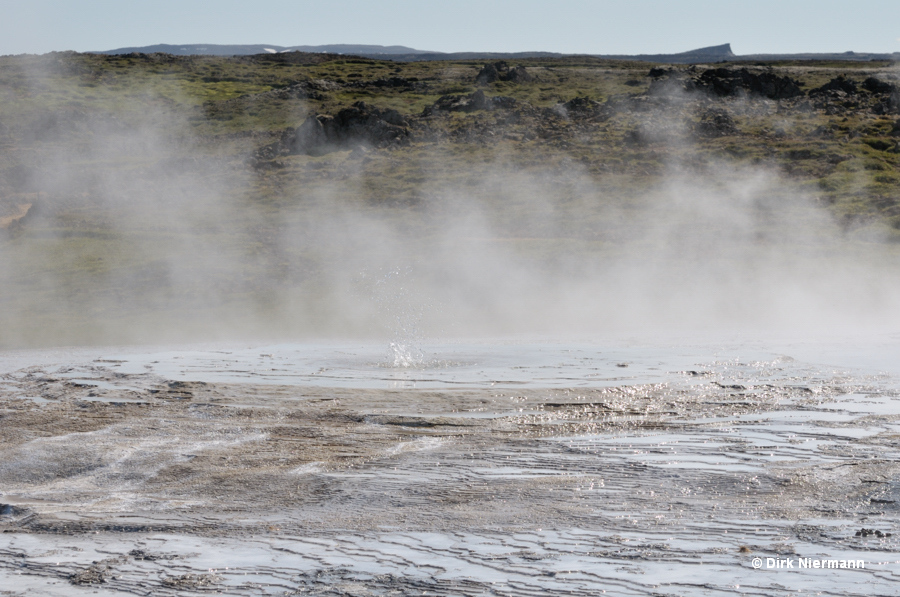
Content and photos on this homepage are protected by law. You may save photos on your Computer, but it is not allowed to use them in any other case without permission of the author. If you want to use photos please ask.